Simple Man’s review – Fender Puresonic Wired (~45 USD)
This is called simple man’s review because they are based on the sound of these earphones directly from my mobile phone (HTC 10), using 320 Kbps mp3 tracks. No expensive gears nor lossless tracks,no EQ, and all that hi-fi stuff.
Product Specs :
Driver: Φ9.25mm Single Dynamic Driver
Impedance: 16 Ohms
Cable: non-detachable, 1.2m, with 3 button mic
Shell: Hard plastic
Nozzle: ~4 mm
Price: 39 EUR (thomann.de)
(This is the price i paid. In Amazon these go for upto 99 USD)
Build – 4/5
Housings are made of hard plastic, and they seem very well made and durable. They look really pretty and stylish. Easily one of the best as far as looks are concerned. Cables are permanently attached in this version. The detachable cable version is named Fender NINE. I strongly guess they are the same earphones, driver, sound and all, with detachable cables minus microphone. The cables are very hard and plasticky and retain a lot of memory. Roll em up and leave them on the table and you shall see them slowly return to their ugly spread out state. I wish they had a more supple and flexible cable.
The Puresonic wired also has the inline mic, which unfortunately does not work with my HTC10. The mic simply records a high pitch tone when activated using my HTC10. They do work properly on my laptop though. This cost them a point.

Unboxing Introducing a new section here for unboxing. These earphones win a prize for the most complicated and annoying unboxing experience I’ve ever had. Removing the plastic base will be most challenging for anyone. I’ve unboxed 2 units, and both were equally hard to remove. I nearly broke the plastic hook thingy on top in an effort to pull out the plastic plate that hide the cables, and accessories beneath. Putting them back in place is near impossible, so one must resort to placing them upside down to close the box after retrieval of earphones. Terrible experience!
Accessories – 4/5
Includes 1/4" plug, airline adapter, cleaning tool and carrying case, and 4 sizes of proprietary ear-gels
The small zipper case provided can hardly hold these earphones.
Isolation & Sound leakage – 4/5
Isolation is great! And so is sound leakage. The snug fit ensures that this section gets a good score. Isolation improves with proper tip selection. The stock eartips are great.
Fit – 4/5
Fit is great as mentioned already. The housings seem like they are almost made for my ears. They seat perfectly, and fit securely without issue. The shallower fit with stock eartips is more comfortable.

Eartips:
These eartips are like no other. One might call them bad, and i can understand this sentiment. The stems barely have any height and the diameter is also very small. The stock tips provide a greater sticky seal which improves with pressure on the skin surface. They say the body heat helps the ear gels to stick fast and fit more like comply foam. Choosing the right tips can really improve isolation and comfort. (I'm using these eartips for Ortofon E-Q5, and they sound great!). When I use some after market tips like ATH tips, for eg, sound quality increases a bit at the expense of slight discomfort. The nozzles are on the thin side, so we can’t safely use JVC spirals and many other after market eartips. Final E tips however manage to stay fit on the thin nozzles, so does some ATH tips. I’m using the medium small stock ear-gels.
Microphonics – 3/5
Present, but not overly annoying.
Drivability – These are not too easy to drive, I must say. The sensitivity is not rated, but I find myself around 50-60% volume in my HTC10s, a couple of notches more than usual.
Sound –
The general signature is W shaped, with big bass, and somewhat forward vocals, with a little extension into the treble region. The tuning is quite commercial and can appeal to the masses who wish to bob their heads to bassy beats and who have a love for rumble and sub-bass.

Soundstage: Soundstage is pretty intimate and forward. One wouldn’t call it wide or spacious. The dynamic fun sound is thrown in your face and is not very sophisticated in this sense.
Bass: BASS! This one is all about the bass. And the sub-bass. The rumble and punch is everlasting and lingers throughout the track. The quality of the bass however is mediocre and I wouldn’t say they spout out a lot of definition. They are more the boomy, visceral, kind of bass.
Mids: The mids are mostly about the vocals, which come through clearly despite the big bass. They do carry a lot of warmth from the bass. The other mid range sounds are generally coloured by the bass, and play a kind of supporting role to the vocals. Details are more on the macro level, and they don’t try to retrieve much more that what is necessary to sound musical.
Treble: Treble, or rather we can say the lower treble has some presence and shimmer. The cymbals don’t sound thin and carry good body. They do lack some micro definition, and detail extraction across the spectrum is average at best.
Comparisons
Round 1 – Fender Puresonic Vs Zero Audio Duoza
ZA Duoza is a bass-head IEM with copious mid-bass and equally rumbling sub-bass. Not my favourite, but when we have a bassy fun IEM, it makes sense to do this comparison. Personal Rating: 7.5

The bass is greatly authoritative in the Duoza and is ever present. The rumble lingers on for longer than necessary, and it has a general boomy sound. Mids and vocals come through easily but are somewhat tame in relation to the big bass. Treble shimmer gives an impression of clarity. Overall definition is decent.
Switching to the Fenders, I notice that the sub bass rumble is equal in intensity and reverb. Mid bass is cleaner and better behaved. The clarity seems improved and we notice a bit more detail in the mids. Instrument definition also is slightly better in comparison. Vocals come through much clearly. Highs are also less harsh and more easy on the ears, Duozas do reach and retrieve more treble details.
The Fenders sound more correct and are closer to natural sound. I give this round to the Fenders.
Round 2 – Fender Puresonic Vs iBasso IT01s
Let’s jump up to the next level and see how the Fenders fare alongside iBasso IT01s. Personal rating: 8.5

IT01s is a decent IEM with a warm, balanced sound. Everything is in its place with the IT01s, with some added shimmer in the highs. The soundstage is immersive, had good depth and the general sound is quite natural.
Switching to the Fenders we do see the fun bass kick in and make the song more dance-able. Lots of details that were quite clear with the ibasso is now kind of smeared and suppressed, lacking certain definition. The treble extension is also evidently lacking in comparison. iBassos do lack the bass punch that is so adequately displayed in the Fenders, but the IT01s is on the whole cleaner sounding in comparison.
Fenders are not able to muscle their way ahead of the iBassos against their more spacious and detailed presentation. The expensive iBasso wins this round.
Round 3 – Fender Puresonic Wired vs LG Quadbeat 3
Let’s bring it down a bit, and see how they stand against the LG Quadbeat 3 which came along with my LG G7 box. Free earphones that sound really good! Personal Rating: 8.1

The Quadbeats are tuned keeping the Harman target in mind, adding some bass to pack a bit of punch. They sound quite clean and the vocals are clear and life-like. The cleaner sound also is able to extract more details, and the general timbre is quite good. They do lack a bit of warmth, and a certain dynamic quality, but in general everything sounds right in the Quadbeats.
Switching to the Fenders, we see a lot of bassy warmth added now, and we also see a lot of leak into the mids affecting some intelligibility in this region. Clarity takes a step back in an effort to give you a head-banging experience. I much prefer the tuning of the Quadbeats.
Safer tuning with more disciplined bass blocks Fenders progress here.
Round 4 – Fender Puresonic Wired vs Moondrop Crescent
These are similar to Quadbeats and are really good for the price. I rate these just a step behind the LGs. Personal Rating: 8.0

The Crescent has a similarly clean sound, like LG quadbeats, but with slightly recessed vocals. The treble comes out a little brighter and in general they sound quite clean and extract a lot of details for the price. They are still a touch behind Quadbeats in this respect as well.
Crescents score important points in timbre and detail retrieval. They also provide enough sub-bass, and yet come out as the cleaner sounding IEM. The Puresonic, going for a fun-bassy sound, does not impress me as much.
Round 5 – Fender Puresonic Wired vs ATH LS50
ATH LS50 is a dual dynamic, full sounding, good low range IEM., that is decent all around. The sound is slightly coloured, but they sound pretty impressive and detailed for the money. Personal rating: 7.8

As you can see the signature is pretty similar, with lesser bass quantity in the LS50s. LS50s sound very natural, and the timbre is great in the bass region. Clarity is really good and immediately perceivable. Vocals are especially forward and clear. There is a slight honky tone due to a certain dip around the mids, but they still sound great overall.
Switching to the Fenders, we hear a darker sound. The bass colours the mids much more, leaks, as opposed to the unhindered, relatively clean mids of the LS50s. When the bass hits, they are a little overwhelming. The focus is much more rooted on the bass. I wouldn’t be listening to bassy tracks with the Fenders, they kind of ruin the overall sound for me. Still, the vocals comes through which kind of saves them from sounding bad.
I have to say the LS50s are tuned much better compared to the bassy Fenders. ATH LS50 wins without question.
Short rant
I did put in some hours with these earphones, but it was hard for me to really like them. And I tried because they are just so pretty. They aren’t bad, vocals do sound quite good, but I expected them to sound much better than this. I think these are worth the 40 Euros I paid. The original asking price of 79 - 99 USD is a little high in my opinion.
Overall Sound rating of Fender Puresonic Wired: 7.6 / 10
Vocals 4/5
Soundstage 3.5/5
Instrument Separation 3/5
Details 3.5/5
Timber 3.5/5

Conclusion –
Fender's entry IEM, Puresonic Wired, is tuned for the masses who love big bass and forward vocals. They look beautiful and sit gracefully on the ear. They nailed the design and comfort. They play mainstream music quite well. The Puresonic Wired, however, lacks some clarity for my taste and can pass for a decent 50 dollar commercial earphone.
This is called simple man’s review because they are based on the sound of these earphones directly from my mobile phone (HTC 10), using 320 Kbps mp3 tracks. No expensive gears nor lossless tracks,no EQ, and all that hi-fi stuff.
Product Specs :
Driver: Φ9.25mm Single Dynamic Driver
Impedance: 16 Ohms
Cable: non-detachable, 1.2m, with 3 button mic
Shell: Hard plastic
Nozzle: ~4 mm
Price: 39 EUR (thomann.de)
(This is the price i paid. In Amazon these go for upto 99 USD)
Build – 4/5
Housings are made of hard plastic, and they seem very well made and durable. They look really pretty and stylish. Easily one of the best as far as looks are concerned. Cables are permanently attached in this version. The detachable cable version is named Fender NINE. I strongly guess they are the same earphones, driver, sound and all, with detachable cables minus microphone. The cables are very hard and plasticky and retain a lot of memory. Roll em up and leave them on the table and you shall see them slowly return to their ugly spread out state. I wish they had a more supple and flexible cable.
The Puresonic wired also has the inline mic, which unfortunately does not work with my HTC10. The mic simply records a high pitch tone when activated using my HTC10. They do work properly on my laptop though. This cost them a point.

Unboxing Introducing a new section here for unboxing. These earphones win a prize for the most complicated and annoying unboxing experience I’ve ever had. Removing the plastic base will be most challenging for anyone. I’ve unboxed 2 units, and both were equally hard to remove. I nearly broke the plastic hook thingy on top in an effort to pull out the plastic plate that hide the cables, and accessories beneath. Putting them back in place is near impossible, so one must resort to placing them upside down to close the box after retrieval of earphones. Terrible experience!
Accessories – 4/5
Includes 1/4" plug, airline adapter, cleaning tool and carrying case, and 4 sizes of proprietary ear-gels
The small zipper case provided can hardly hold these earphones.
Isolation & Sound leakage – 4/5
Isolation is great! And so is sound leakage. The snug fit ensures that this section gets a good score. Isolation improves with proper tip selection. The stock eartips are great.
Fit – 4/5
Fit is great as mentioned already. The housings seem like they are almost made for my ears. They seat perfectly, and fit securely without issue. The shallower fit with stock eartips is more comfortable.

Eartips:
These eartips are like no other. One might call them bad, and i can understand this sentiment. The stems barely have any height and the diameter is also very small. The stock tips provide a greater sticky seal which improves with pressure on the skin surface. They say the body heat helps the ear gels to stick fast and fit more like comply foam. Choosing the right tips can really improve isolation and comfort. (I'm using these eartips for Ortofon E-Q5, and they sound great!). When I use some after market tips like ATH tips, for eg, sound quality increases a bit at the expense of slight discomfort. The nozzles are on the thin side, so we can’t safely use JVC spirals and many other after market eartips. Final E tips however manage to stay fit on the thin nozzles, so does some ATH tips. I’m using the medium small stock ear-gels.
Microphonics – 3/5
Present, but not overly annoying.
Drivability – These are not too easy to drive, I must say. The sensitivity is not rated, but I find myself around 50-60% volume in my HTC10s, a couple of notches more than usual.
Sound –
The general signature is W shaped, with big bass, and somewhat forward vocals, with a little extension into the treble region. The tuning is quite commercial and can appeal to the masses who wish to bob their heads to bassy beats and who have a love for rumble and sub-bass.

Soundstage: Soundstage is pretty intimate and forward. One wouldn’t call it wide or spacious. The dynamic fun sound is thrown in your face and is not very sophisticated in this sense.
Bass: BASS! This one is all about the bass. And the sub-bass. The rumble and punch is everlasting and lingers throughout the track. The quality of the bass however is mediocre and I wouldn’t say they spout out a lot of definition. They are more the boomy, visceral, kind of bass.
Mids: The mids are mostly about the vocals, which come through clearly despite the big bass. They do carry a lot of warmth from the bass. The other mid range sounds are generally coloured by the bass, and play a kind of supporting role to the vocals. Details are more on the macro level, and they don’t try to retrieve much more that what is necessary to sound musical.
Treble: Treble, or rather we can say the lower treble has some presence and shimmer. The cymbals don’t sound thin and carry good body. They do lack some micro definition, and detail extraction across the spectrum is average at best.
Comparisons
Round 1 – Fender Puresonic Vs Zero Audio Duoza
ZA Duoza is a bass-head IEM with copious mid-bass and equally rumbling sub-bass. Not my favourite, but when we have a bassy fun IEM, it makes sense to do this comparison. Personal Rating: 7.5

The bass is greatly authoritative in the Duoza and is ever present. The rumble lingers on for longer than necessary, and it has a general boomy sound. Mids and vocals come through easily but are somewhat tame in relation to the big bass. Treble shimmer gives an impression of clarity. Overall definition is decent.
Switching to the Fenders, I notice that the sub bass rumble is equal in intensity and reverb. Mid bass is cleaner and better behaved. The clarity seems improved and we notice a bit more detail in the mids. Instrument definition also is slightly better in comparison. Vocals come through much clearly. Highs are also less harsh and more easy on the ears, Duozas do reach and retrieve more treble details.
The Fenders sound more correct and are closer to natural sound. I give this round to the Fenders.
Round 2 – Fender Puresonic Vs iBasso IT01s
Let’s jump up to the next level and see how the Fenders fare alongside iBasso IT01s. Personal rating: 8.5

IT01s is a decent IEM with a warm, balanced sound. Everything is in its place with the IT01s, with some added shimmer in the highs. The soundstage is immersive, had good depth and the general sound is quite natural.
Switching to the Fenders we do see the fun bass kick in and make the song more dance-able. Lots of details that were quite clear with the ibasso is now kind of smeared and suppressed, lacking certain definition. The treble extension is also evidently lacking in comparison. iBassos do lack the bass punch that is so adequately displayed in the Fenders, but the IT01s is on the whole cleaner sounding in comparison.
Fenders are not able to muscle their way ahead of the iBassos against their more spacious and detailed presentation. The expensive iBasso wins this round.
Round 3 – Fender Puresonic Wired vs LG Quadbeat 3
Let’s bring it down a bit, and see how they stand against the LG Quadbeat 3 which came along with my LG G7 box. Free earphones that sound really good! Personal Rating: 8.1

The Quadbeats are tuned keeping the Harman target in mind, adding some bass to pack a bit of punch. They sound quite clean and the vocals are clear and life-like. The cleaner sound also is able to extract more details, and the general timbre is quite good. They do lack a bit of warmth, and a certain dynamic quality, but in general everything sounds right in the Quadbeats.
Switching to the Fenders, we see a lot of bassy warmth added now, and we also see a lot of leak into the mids affecting some intelligibility in this region. Clarity takes a step back in an effort to give you a head-banging experience. I much prefer the tuning of the Quadbeats.
Safer tuning with more disciplined bass blocks Fenders progress here.
Round 4 – Fender Puresonic Wired vs Moondrop Crescent
These are similar to Quadbeats and are really good for the price. I rate these just a step behind the LGs. Personal Rating: 8.0

The Crescent has a similarly clean sound, like LG quadbeats, but with slightly recessed vocals. The treble comes out a little brighter and in general they sound quite clean and extract a lot of details for the price. They are still a touch behind Quadbeats in this respect as well.
Crescents score important points in timbre and detail retrieval. They also provide enough sub-bass, and yet come out as the cleaner sounding IEM. The Puresonic, going for a fun-bassy sound, does not impress me as much.
Round 5 – Fender Puresonic Wired vs ATH LS50
ATH LS50 is a dual dynamic, full sounding, good low range IEM., that is decent all around. The sound is slightly coloured, but they sound pretty impressive and detailed for the money. Personal rating: 7.8

As you can see the signature is pretty similar, with lesser bass quantity in the LS50s. LS50s sound very natural, and the timbre is great in the bass region. Clarity is really good and immediately perceivable. Vocals are especially forward and clear. There is a slight honky tone due to a certain dip around the mids, but they still sound great overall.
Switching to the Fenders, we hear a darker sound. The bass colours the mids much more, leaks, as opposed to the unhindered, relatively clean mids of the LS50s. When the bass hits, they are a little overwhelming. The focus is much more rooted on the bass. I wouldn’t be listening to bassy tracks with the Fenders, they kind of ruin the overall sound for me. Still, the vocals comes through which kind of saves them from sounding bad.
I have to say the LS50s are tuned much better compared to the bassy Fenders. ATH LS50 wins without question.
Short rant
I did put in some hours with these earphones, but it was hard for me to really like them. And I tried because they are just so pretty. They aren’t bad, vocals do sound quite good, but I expected them to sound much better than this. I think these are worth the 40 Euros I paid. The original asking price of 79 - 99 USD is a little high in my opinion.
Overall Sound rating of Fender Puresonic Wired: 7.6 / 10
Vocals 4/5
Soundstage 3.5/5
Instrument Separation 3/5
Details 3.5/5
Timber 3.5/5

Conclusion –
Fender's entry IEM, Puresonic Wired, is tuned for the masses who love big bass and forward vocals. They look beautiful and sit gracefully on the ear. They nailed the design and comfort. They play mainstream music quite well. The Puresonic Wired, however, lacks some clarity for my taste and can pass for a decent 50 dollar commercial earphone.



































































































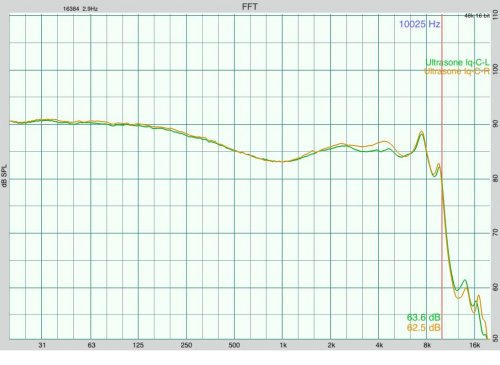



























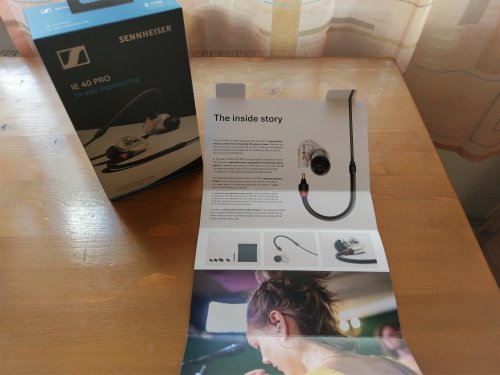
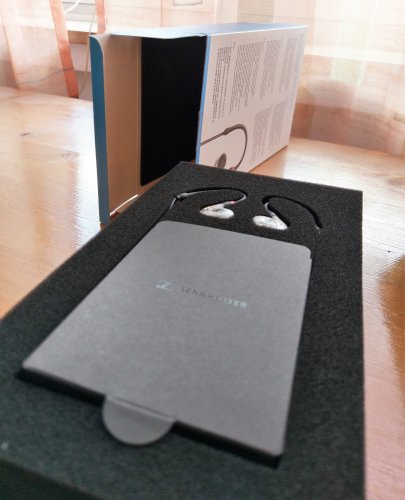

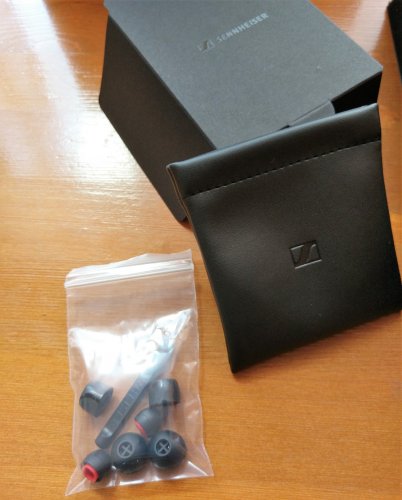

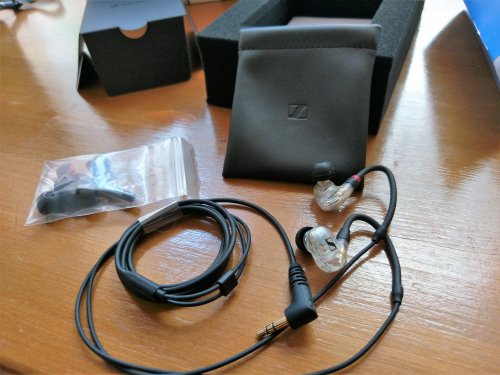

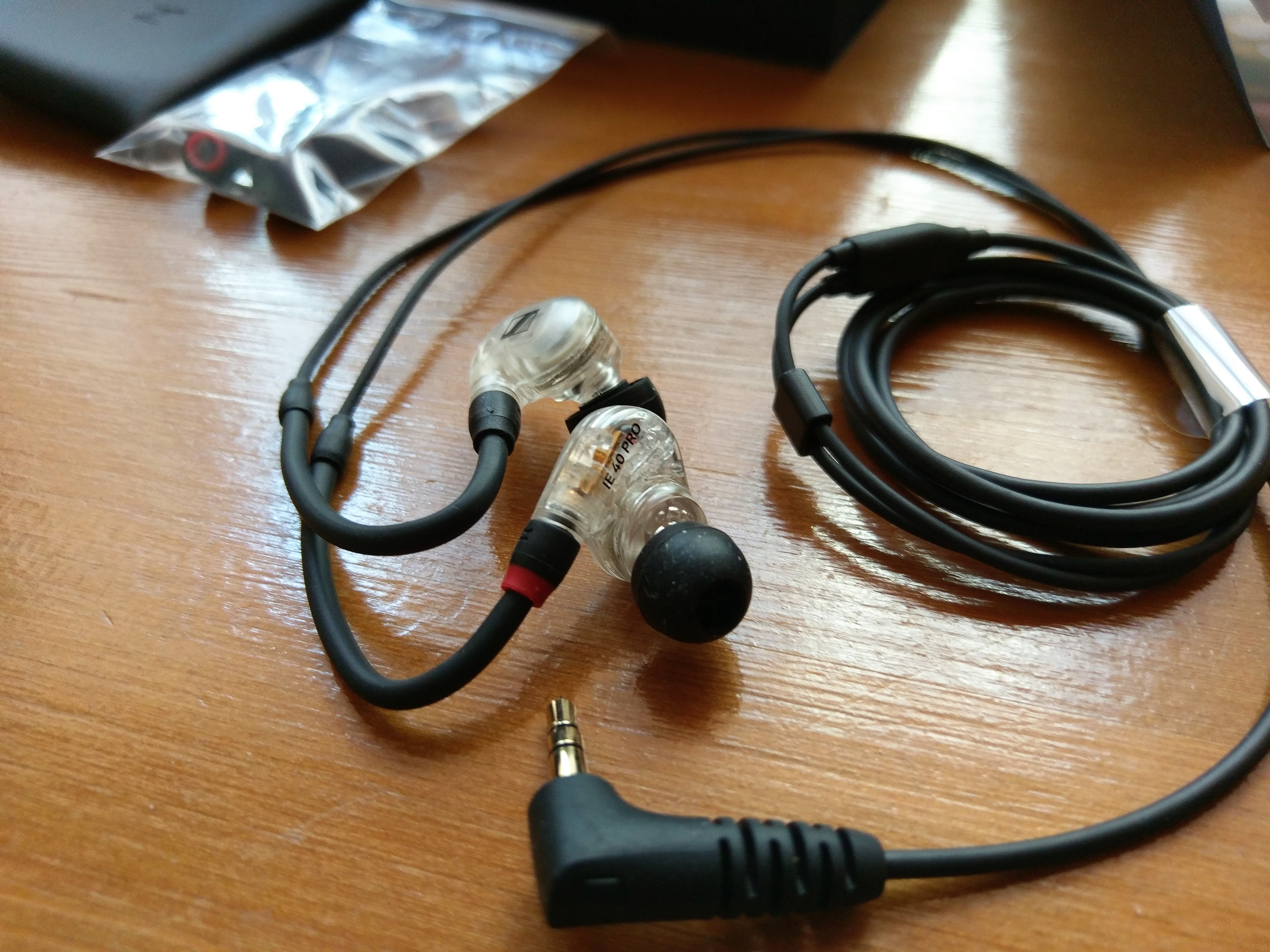
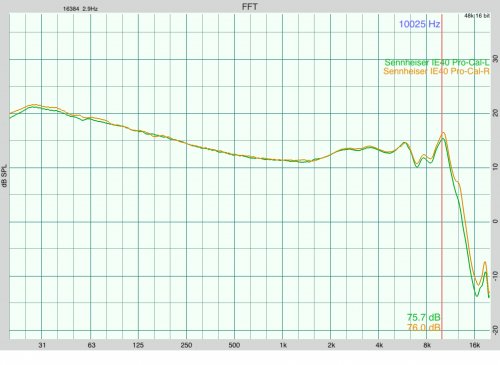











































I have to the ER2XR now, and the EPH200 sounds like something I would like. I'm guessing these are going to be slightly easier to fit and take out of ears? TIA!